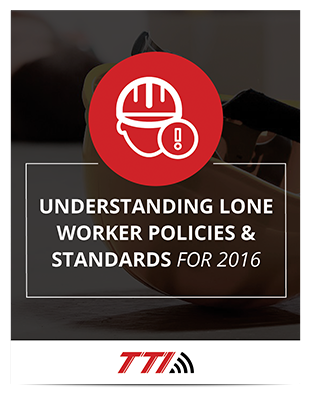Safety & Security Blog
The latest in employee safety, duress alarms, and lone worker security.
OSHA has less to say about protecting lone workers than you might expect. However, the agency has a longstanding, well-established set of policies that dictate that employers should take reasonable precautions for safeguarding all workers. Most employers do so out of human decency, anyway, not because there is a law or rule somewhere stating that they have to. What are the best strategies for making sure that lone workers are protected on the job?
Share
CareerCast is all about jobs. They help people find jobs, and they like to rank jobs. They rank the best jobs of the year, the worst jobs of the year, and even how to get the good ones. CareerCast also produces an annual list of the most dangerous jobs, and for 2015, working with animals, firefighting, lumberjacking, and being a corrections officer topped the list. Why are corrections officers at such a high risk of accident or injury or illness? It goes beyond the fact that they deal with criminals all day every day, many of which are violent offenders. There is more to it.
Share

Subscribe and download your free guide now!
A duress alarm system is a critical safety feature for businesses, schools, and other organizations. Here’s how to select the right system for your unique needs.
Share
Worker safety is of paramount importance within the manufacturing industry. Good safety records keep OSHA and other government regulators from knocking, and help to reduce the growing costs of workers' compensation insurance. But on a personal level, no owner, manager, or supervisor wants their workers injured. These workers aren't just a financial investment, they are the heart and soul of the company. Here are several reasons why your manufacturing facility needs to add a duress alarm system to your safety plan as soon as possible.
Share
Today's threats are growing by the moment. A wireless society means that more workers are doing their jobs remotely, while incidents of violence and terrorism grow continually. It's challenging to keep up with who is where, what they're up to, and when a worker might be in danger. In response to these trends, duress alarm systems have been developed to help organizations keep track of workers, check on their well-being, and allow workers to summon help when needed. This is what duress alarms are and how they can protect your most valuable asset -- your people.
Share
A sizeable percentage of workers in today's society spend all or a lot of their time alone. Sales people, service professionals, security guards, medical personnel, clerks, and numerous other workers are often by themselves, in unfamiliar areas, around people they don't know, and potentially in the dark. When fall and winter set in, dark can come as early as 4PM. This means that a typical worker with an 8 to 5 job is leaving well past dark, and workers on second and third shifts might come to work and leave again, all in the dark. How can employers help keep workers safe when they're out in the dark?
Share